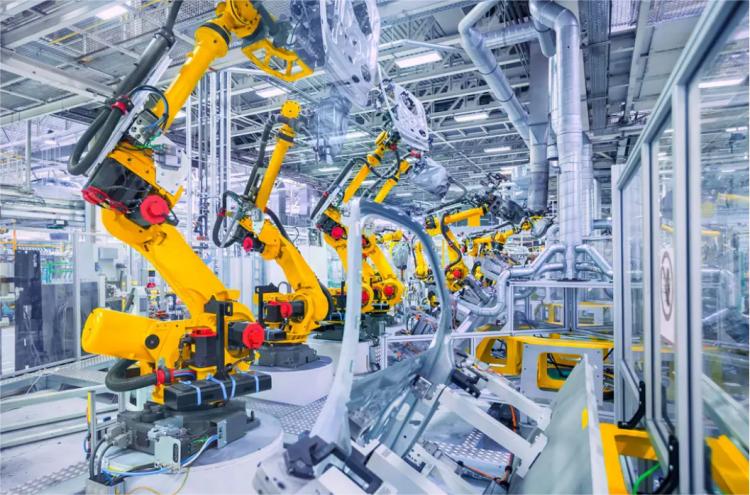Robotic arms are widely used in automated production lines in industrial applications to perform tasks such as welding, assembly, painting, and handling. They improve production efficiency, precision, and safety, reduce labor costs and operational errors, and promote the intelligent transformation of the manufacturing industry.
Principle structure
Industrial robotic arms imitate human arm movements through multiple joints and actuators, and are usually composed of a drive system, a control system, and an end effector. Its working principle includes the following aspects: Drive system: Usually powered by an electric motor, hydraulic or pneumatic system to drive the movement of each joint of the robotic arm. Joints and connecting rods: The robotic arm consists of multiple joints (rotational or linear) and connecting rods to form a motion structure similar to that of the human body. These joints are connected by a transmission system (such as gears, belts, etc.), allowing the robotic arm to move freely in three-dimensional space. Control system: The control system adjusts the movement of the robotic arm in real time through sensors and feedback systems according to preset task instructions. Common control methods include open-loop control and closed-loop control. End effector: The end effector (such as a gripper, welding gun, spray gun, etc.) is responsible for completing specific operating tasks, such as grabbing objects, welding, or painting.
Uses/Highlights
1 Uses
Robotic arms are widely used in industry, mainly including: automated assembly, welding, handling and logistics, spraying and painting, laser cutting and engraving, precision operation, medical and surgery, etc.
2 Highlights
The highlights of robotic arms are high precision, high repeatability and flexibility. They can replace manual labor in dangerous, repetitive and heavy environments, significantly improving production efficiency and safety. Through automated operation, robotic arms can work 24 hours a day, promoting the intelligence and refinement of industrial production. These applications have significantly improved production efficiency, quality control and operational safety.
Current situation and breakthroughs
China’s industrial robotic arm market has developed rapidly in recent years and has become an important innovation center for global robotics technology. China has made significant breakthroughs in robotic arm technology, which is mainly reflected in the following aspects: Technological progress: NEWKER CNC has launched a number of high-precision, high-load robotic arms, which are widely used in automotive manufacturing, electronic assembly, food processing, 3C products, medical and other fields. China has made continuous progress in motion control, artificial intelligence and flexible manufacturing technology, especially in the fields of collaborative robots and intelligent robots, gradually moving to the forefront of the world. Industrial upgrading: The Chinese government has vigorously promoted intelligent manufacturing and industrial automation, and issued policies such as “Made in China 2025″ to encourage companies to accelerate technological innovation in industrial robots. The domestic robot industry chain is becoming increasingly complete, forming a complete ecosystem including R&D, production, system integration and services. Cost advantage and market potential: China has a strong cost control advantage and can provide high-performance robotic arm products at a lower price, which promotes widespread application in the market. Coupled with the huge demand of the domestic manufacturing industry, the popularity of robotic arms in various industries has increased year by year. Overall, China’s industrial robotic arm technology has gradually surpassed the international advanced level, and there is still broad market space and development potential in the future.
Post time: Jan-10-2025








